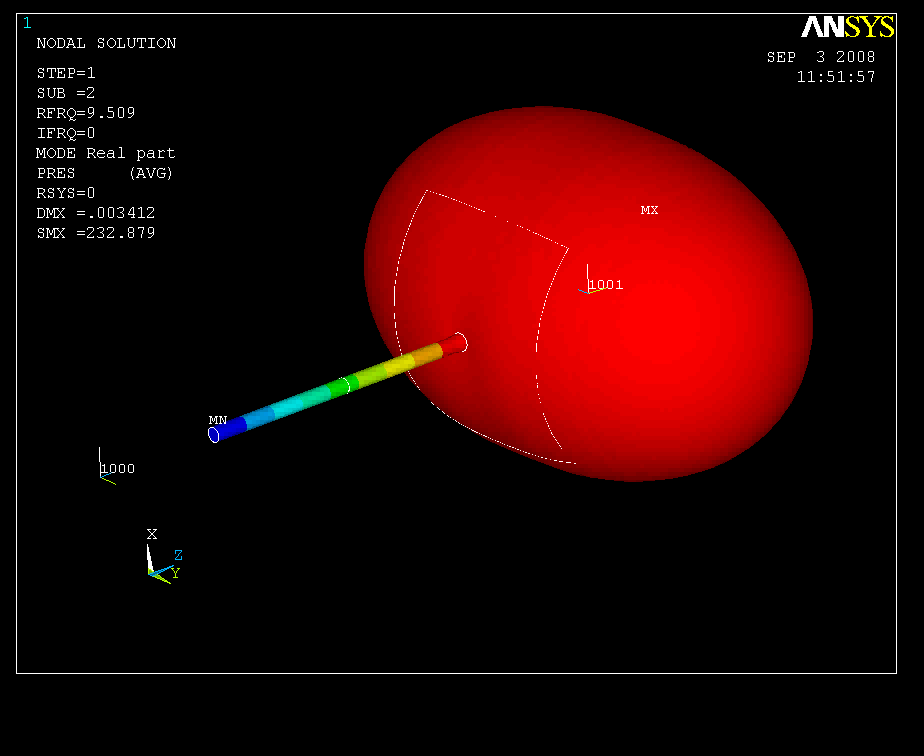Cavitation Surge and Acoustic Resonance
Acoustic Analysis: A nuclear power plant experienced chronic excessive sub-synchronous vibrations in their A and C Residual Heat Removal (RHR) pumps. This vibration became particularly large when Pump C operated at low flow rates, while Pump A was not operating. At this condition, vibration of both pumps was substantial, with Pump A (not operating) vibration levels greater than those of the operating Pump C. Previously, specialized testing by MSI (Figure 1) concluded that the root cause of the excessive sub-synchronous vibration was a type of hydraulic instability known as cavitation surge. Cavitation surge is cavitation that oscillates at a low frequency (auto-oscillation). Cavitation surge alone is a major concern for pump integrity. In this case it was also exciting an acoustic discharge pipe mode at 11.5 Hz leading to significant amplification of the cavitation surge pressure pulsations (note: acoustic piping modes can also excited by super synchronous vane pass frequency which is generally more common). Solution options included: addressing the excitation source with an impeller redesign (preferred in this case) or attenuating the acoustic/structural response.
Figure 1. Example Pumps A and C discharge pressure dynamic data and FFT plots showing the 11.5 Hertz acoustic natural frequency at the pump discharge being excited by cavitation surge at lower flow rates.
An impeller redesign was agreed as the final solution. However, an interim solution was needed. As part of a follow-on pump/piping system acoustic analysis, an acoustic absorber was designed using fluid structural interaction finite element analysis (FEA) techniques. A twin Helmholtz resonator system was ultimately sized and selected to absorb the acoustic pressure pulsations near 11.5 Hz (Figure 2). A Helmholtz resonator is an acoustic cavity with a restriction (neck) installed in the piping system to essentially increase the problem pipe section length (L) to shift the piping acoustic natural frequency away from the excitation frequency without major piping modifications. The fluid in the neck forms the mass of the oscillator and the bulk modulus of the fluid in the cavity is the spring of the oscillator. This can be compared to a typical single-degree-of-freedom spring and mass system. Helmholtz resonators are more typically used to address ¼ and ½ wave piping resonance issues. High pass filter tube arrays and membrane pulsation dampers are also effective for attenuating low frequency pressure pulsations. However, they carry an elevated risk of leakage.
Figure 2. Left - Example Helmholtz regulator. Right - The effective frequency bandwidth for the Helmholtz resonator changes as a function of tank volume and can be traded to meet frequency range requirements versus physical space constraints.
The fluid structure interaction (FSI) FEA and forced response analyses were conducted to successfully: a) evaluate the effects of a reduced stiffness flex hose in the Helmholtz neck, b) size the Helmholtz neck length and tank volumes to obtain the desired absorber frequency range, and c) consider installation constraints. The key deliverables from MSI were the Helmholtz regulator drawings and installation instructions support by the analysis results. The analysis had to consider the various combinations of operating pumps and valve positions.
REAL-WORLD EXAMPLES AND CASE STUDIES
MSI In Action
Case Study
A Cure for the Common Cold – in Turbines
A steam turbine at a waste-to-energy facility in the Northeast underwent a scheduled repair, at which time the turbine bearings were reworked, after which the turbine periodically experienced very high amplitude shaft vibrations.
Case Study
BFP Fluid Drive Troubleshooting
A boiler feed pump (BFP) driven off of the main steam turbine via a fluid drive was experiencing high vibration levels leading to frequent replacement of the fluid drive bearings.
Case Study
Aeroderivative Gas Turbine Modifications to Solve a Problem
MSI was contracted to understand and help solve a high vibration problem on an aero-derivative gas turbine driven generator.



